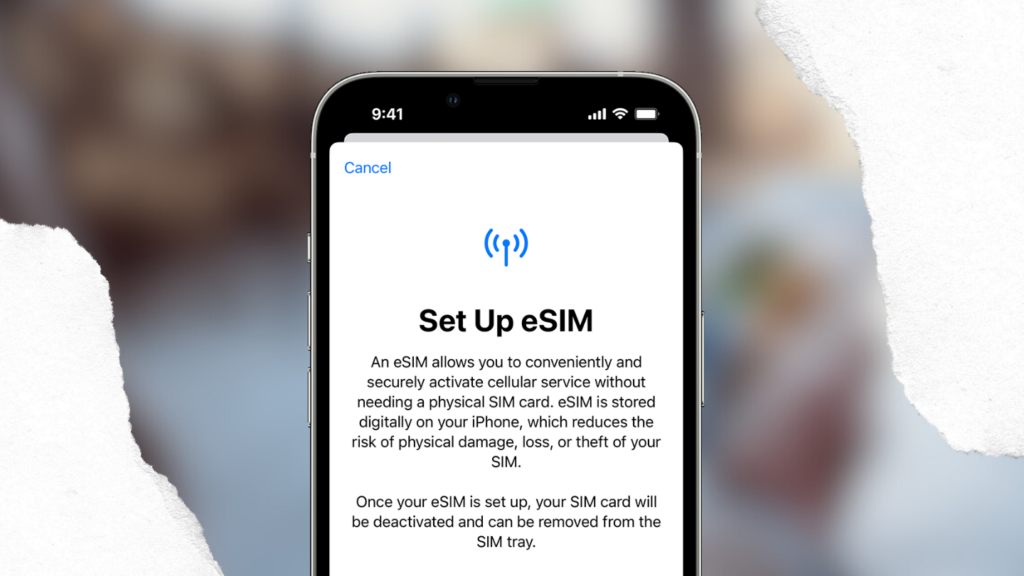Table of Contents
Traveling overseas can sound thrilling, yet it may be challenging to remain connected. Tourists prefer reliable internet connection with cell phone service access, albeit adjusting data packages abroad might become complicated.
Related: “Top 5 Best ESIM Providers For Travel Abroad“
For the past decade, smart cards have represented a solid online communication method, however electronic SIM cards have arisen as a new frontrunner. Certain individuals believe eSIM represents the next generation of mobile access for voyageurs, but some users advise caution prior to undertaking the transition. This article compares eSIMs to common SIM cards and answers the question, “What is the best card for travel?”

Introduction to eSIM technology
eSIM, or embedded SIM, is an electronic component attached to handsets’ motherboards, functioning identically to common smart cards and providing additional features. e-SIM preserves space, offering greater privacy. That can likewise be utilized in a broad spectrum of gadgets, involving cell phones, desktops, tablets, smartwatches and others. One drawback entails microchips cannot be replaced, nevertheless configurations may still be modified.
eSIM vs SIM card
In terms of technological advances, electronic SIM and typical SIM chips seem equivalent. Major distinction entails the fact e-SIMs can keep multiple profiles and be programmed. It implies, instead of carrying a separate business trip subscriber identity profile, users can add extra choices to online SIM module. Although this may emerge as an insignificant modification, it’s got enormous implications for individuals. Now we will look at the positive aspects of electronic SIM technology along with possible downsides.
The difficulty of getting a local SIM when traveling internationally
Purchasing local SIM card when flying overseas might turn out problematic. Users must find stores selling cellular subscriber identification modules, overcome language barriers, and frequently face alternative billing systems, resulting in time and money loss. Moreover, nothing guarantees great functioning of a new smart card with your handset providing persistent network coverage.
What to choose for travel — Physical SIM vs eSIM?
When it comes to international travel, eSIMs provide numerous important advantages over ordinary smartphone smart cards:
- Comfortable utilization and activation. Users don’t bother locating local merchants to buy electronic smart chips and set up new data subscriptions. You can instead activate your eSIM before leaving the house;
- Depending on your travel plans, an eSIM card may be a cheaper option. If you want to visit numerous countries, virtual SIM cards may help you to economize, giving coverage across the globe;
- Digital SIM offers flexibility, allowing users to switch providers without physically replacing smart cellphone chips. That’s especially handy for tourists of locations, where most carriers don’t provide coverage;
- Online SIM cards provide greater privacy than common SIM cards since being resistant to hacking attacks and theft. Electronic smart chips can be urgently erased and replaced if users’ devices are lost or stolen;
- Being integrated directly into the handset’s motherboard, virtual subscriber identity modules cannot become dislodged / damaged apart from standard SIM cards.
SIM to eSIM Conversion Procedure
Proper eSIM functioning depends on device’s configurations. Modern gadgets supporting wireless smart chips require scanning codes with QR tags. Older devices’ users can submit data manually and await the selected carrier’s confirmation.

Follow this guideline to enable eSIM technology:
- Install an application;
- Register personal account;
- Choose “Settings”;
- Choose between a physical SIM and an eSIM account.
Concluding, virtual cellular chip technology outperforms traditional SIM cards for foreign travel offering comfortable usability, cost savings, flexibility, security, and dependability. Using eSIM for international travel makes journeys smoother, saving customers’ time and money and providing powerful connectivity globally.




